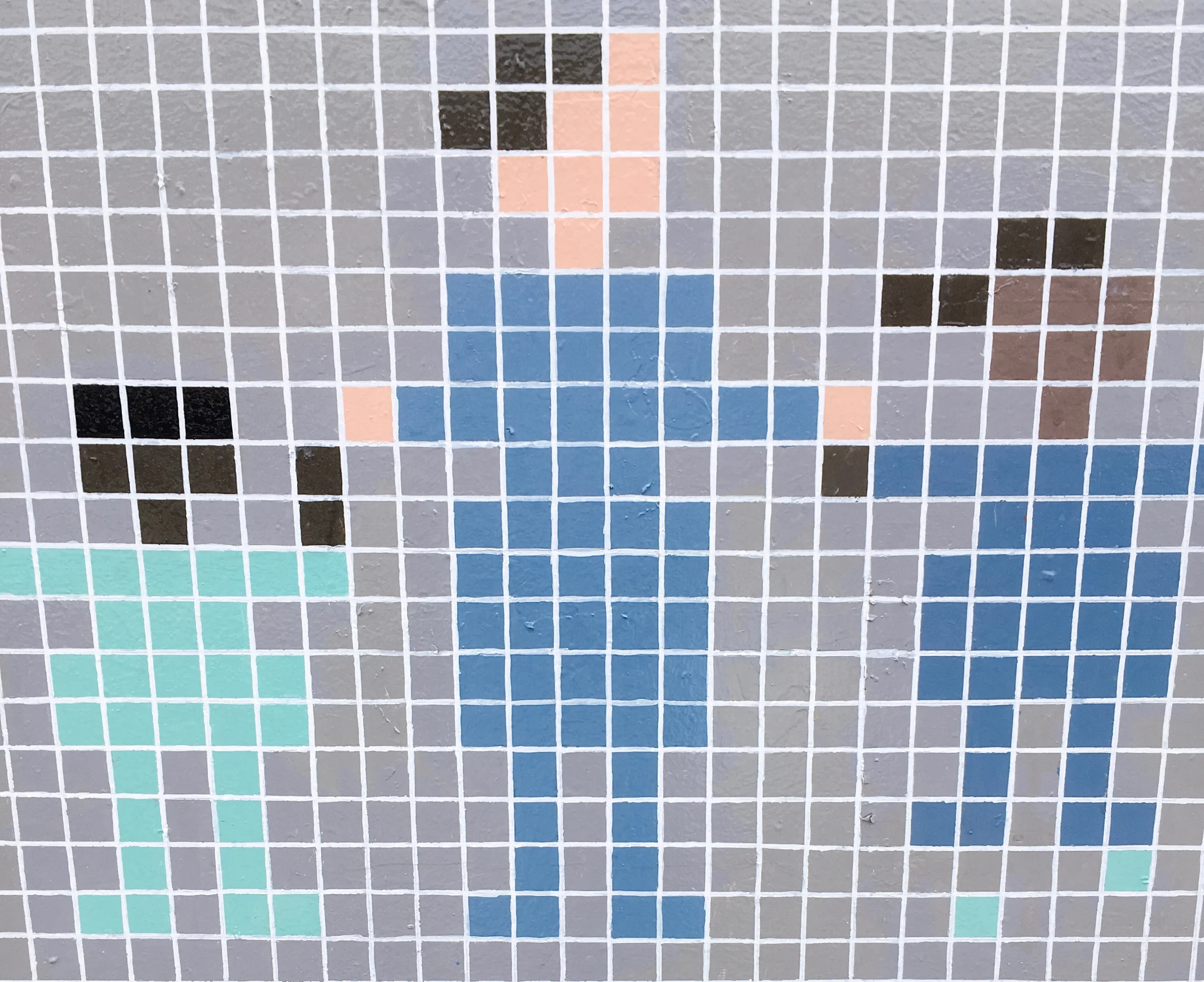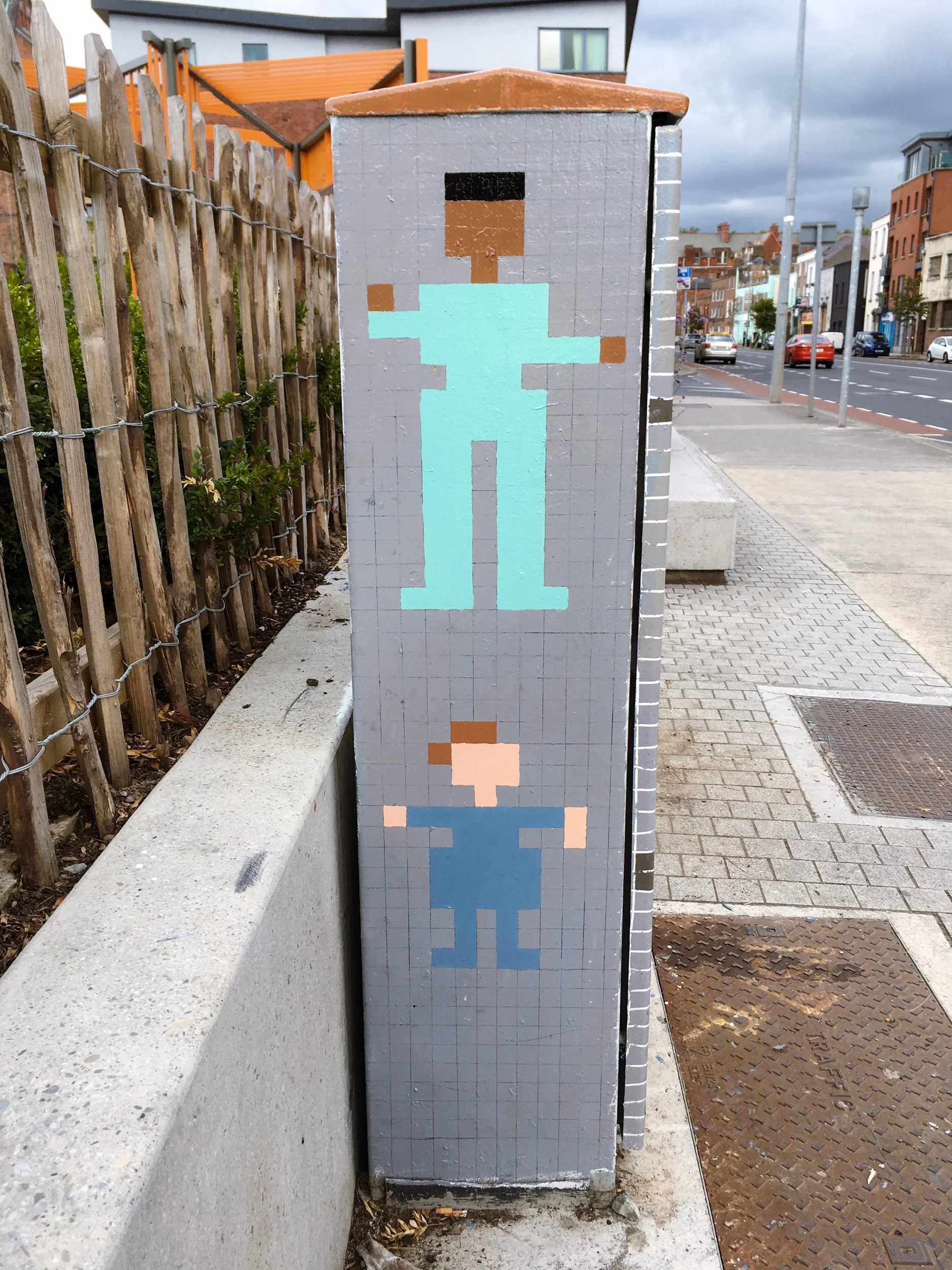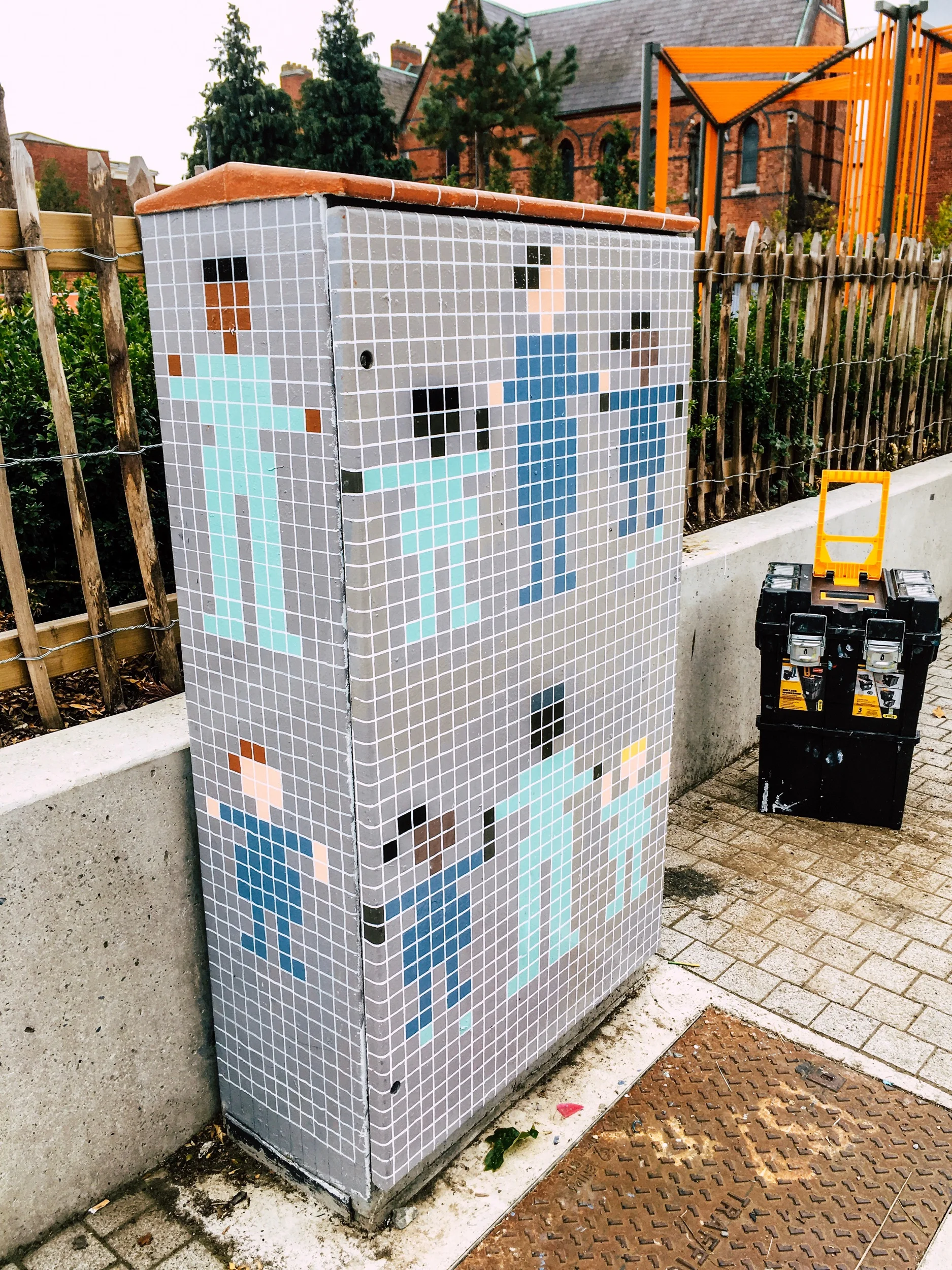For the last few years, one of my goals has been to paint a circuit box for Dublin Canvas. I even had a routine: every year I would download the application form and then… procrastinate until it was too late to apply. 😬 Last year I was determined to actually go through with applying, and (to my own surprise) I actually did!
A detail of my finished painting
I had been unsure what design I actually wanted to paint, until I noticed that one of the boxes available this year was located at the newly regenerated Weaver Park. Immediately, I decided to apply for that spot, and I knew what I wanted to paint there.
First, some background: I lived around the corner from Weaver Park when I was very small. At that time, the park didn’t exist and there were Corporation flats in the square (Weaver Court and Chamber Court). On the balconies of the flats were mosaics showing rows of people holding hands, and one of my few memories off living in the neighbourhood is of passing by the flats and being fascinated by the little people in the mosaic. I had actually completely forgotten about this until a few years ago, when the Dublin Inquirer ran a piece about the remaining mosaics. I hadn’t realised until then that they are quite rare, featuring on only a few other buildings (as far as I know, the only ones remaining are at North Strand, Kevin Street and Coleraine Street).
The flats, with the mosaics just visible on the balconies. Photo: UCD archives/Assoc. Prof Joseph Brady
So when I saw that the box at Weaver Square was available for painting, I immediately knew that I wanted to paint a tribute to the mosaic. It seemed like the perfect fit for the site.
First, though, since my memories from 1988 were not exactly detailed, I would need to pin down exactly what the mosaic looked like, which was easier said than done. The flats were demolished back in 2008. I think if they had been standing even five years later, there would probably have been a ton of photos online, but all I could find by googling was a handful of low-res images. These at least confirmed that I hadn’t imagined the whole thing, but they didn’t give me enough detail to work from. Finally I sent out an appeal on Twitter and somebody linked me to this now-defunct blog, which has part of the mosaic as its header, and these brilliant photos taken by Willem Heeffer. (They are really worth a look, especially the interior shots of Chamber Court. Go check them out!) However, though the mosaics are visible in those last photos, I couldn’t see enough detail to reproduce the pattern, and the blog header image shows the pattern clearly but not all of the colours that were used (some balconies had the mosaic in grey and purple, others in shades of turquoise). So I wrestled with my usual social anxiety, got in touch with Willem, explained the situation, and asked if by any chance he had any other shots that would let me reconstruct the pattern and colour palette of the mosaics. He responded quickly and was incredibly helpful and encouraging, sending me several high-res photos that were EXACTLY what I needed. Finally I could get to work!
Over the next while I went back and forth between graph paper and Photoshop, drawing a copy of the pattern and a mock-up of what it would look like wrapped around the circuit box. I sent in my application and was, obviously, delighted when it was accepted and I was allocated the Weaver Park box. I decided to incorporate the main colours from the original mosaic — grey, yellow, purplish-blue and turquoise — but to give the figures somewhat realistic skin tones and hair colours, both to make the painting more visually interesting and to reflect how diverse the Liberties area is today.
One side of the box with the figures painted, waiting for the ‘grout’ to be painted on
Since I had absolutely no experience with murals or large-scale paintings, I took Dublin Canvas up on their offer to supply materials. They gave me tubs of paint, brushes, a high-vis, and assorted other kit. I supplemented this with some rulers and masking tape for marking off grids, and a handful of small paintbrushes that my daughter didn’t want any more, which I used for painting details/individual ‘tiles’.
The actual painting was done over several days in August. It was difficult at first as I hadn’t worked with this type of paint before or worked at such a big scale, but once I got the hang of it I got into a good rhythm. I was lucky with the weather as it was warm and sunny most of the time (so sunny that I got a sunburn down one side of my face from working in the same spot all afternoon!). I had been nervous about working in public, but I needn’t have worried — lots of people came over to chat, and they were all so friendly and interested in what I was doing. There were quite a few people who remembered the old flats and their mosaics, including one person whose mother had grown up there. My favourite visitor was a very little girl who came over to ask if I lived in the circuit box 😁
The finished box
Overall, this project took a lot of planning and work, but I’m really happy with how it turned out, and so glad I took the chance to do this. I picked up some new skills and loved getting to work in a completely different setting and medium than I’m used to. And I’m glad I got to pay tribute to a bit of Dublin history! I’ve applied for Dublin Canvas again this year so hopefully I’ll get to work on another project this summer.



